What is cross-site scripting?
Cross-Site Scripting or XSS flaw is similar to SQL injection where an attacker finds the vulnerable parts of website code to target the confidential data like user login details, credentials or financial information. It also uses scripts injection. Especially for some scripting programming language like JavaScript, hackers inject their own scripts to the user system by inserting malicious code which runs on the browser, and when user visit the injected website then it directly goes after the user or visitor. This attack remarkably devastates the reputation of the website by putting the client’s personal information at risk. With the use of Cross-Site Script, the sensitive data or information such as credit card details, credentials, account details, or other personal data can be hacked and the website’s owner may not realize it. This is because these scripts are as tricky as that they may rewrite webpage contents to guide visitors to do some tasks that they think these things are asked by the web owners. It is even very difficult to detect a remove as these scripts are embedded into the webpages.
Types of Cross-Site Scripting Attacks
Reflected XSS
Reflected XSS refers to an attack in which contains the vulnerable accepting data of the website and it will be delivered by the web browser of the victim to attack the target. Vulnerable website accepting data means malicious script which is sent by the target and it does not store on the servers with vulnerability.
Persistent XSS
This attack is little different because it stores on the vulnerable servers but in this attack, an attacker will post forum on the vulnerable website which contains the malicious script. Whenever the user or the target will access that forum then website will execute the malicious script. In this attack, all the users are considered as target for the attacker.
DOM-Based XSS
DOM-Based XSS refers to Document Object Model-Based XSS and the vulnerability exists on the scripts of the client side. In this attack, the malicious script does not execute to the user’s web browser. The vulnerable server does not contain any malicious script in this attack because it has vulnerable client-side scripts which have a malicious script to attack the user’s browser.
Solutions to prevent the Cross-Site Scripting Attacks
User input must be sanitized
User-provided input must be sanitized by encoding the output to recognize and prevent the affected user-provided data. This data or intimate information must not trigger to be executed automatically by a browser.
Limit the user-provided data
The user-provided data must be limited and it must be used when it is needed.
Utilization of Content Security Policy
Content Security Policy delivers some extra protection and it can have some mitigation strategies to resolve the issues of attempting Cross-Site Scripting attacks.
Our cross-site scripting service
Please tell us about yourself, what web development technologies are used for your business, what matters to you, and our team will deliver a customized protection plan to achieve the goal of cybersecurity for your website, then work closely with you to keep it on track.
Written by Julio Del Cid from DelCorp Data. Julio Del Cid can help with cross-site scripting. If you need assistance you can visit our contact page and request a call-back about cross-site scripting.
DelCorp Data is a cybersecurity agency which specializes in software-based attacks and overall cyber protection of your organization. Contact us on 1300 del corp / 1300335267. We are an Australian company based in Melbourne.

